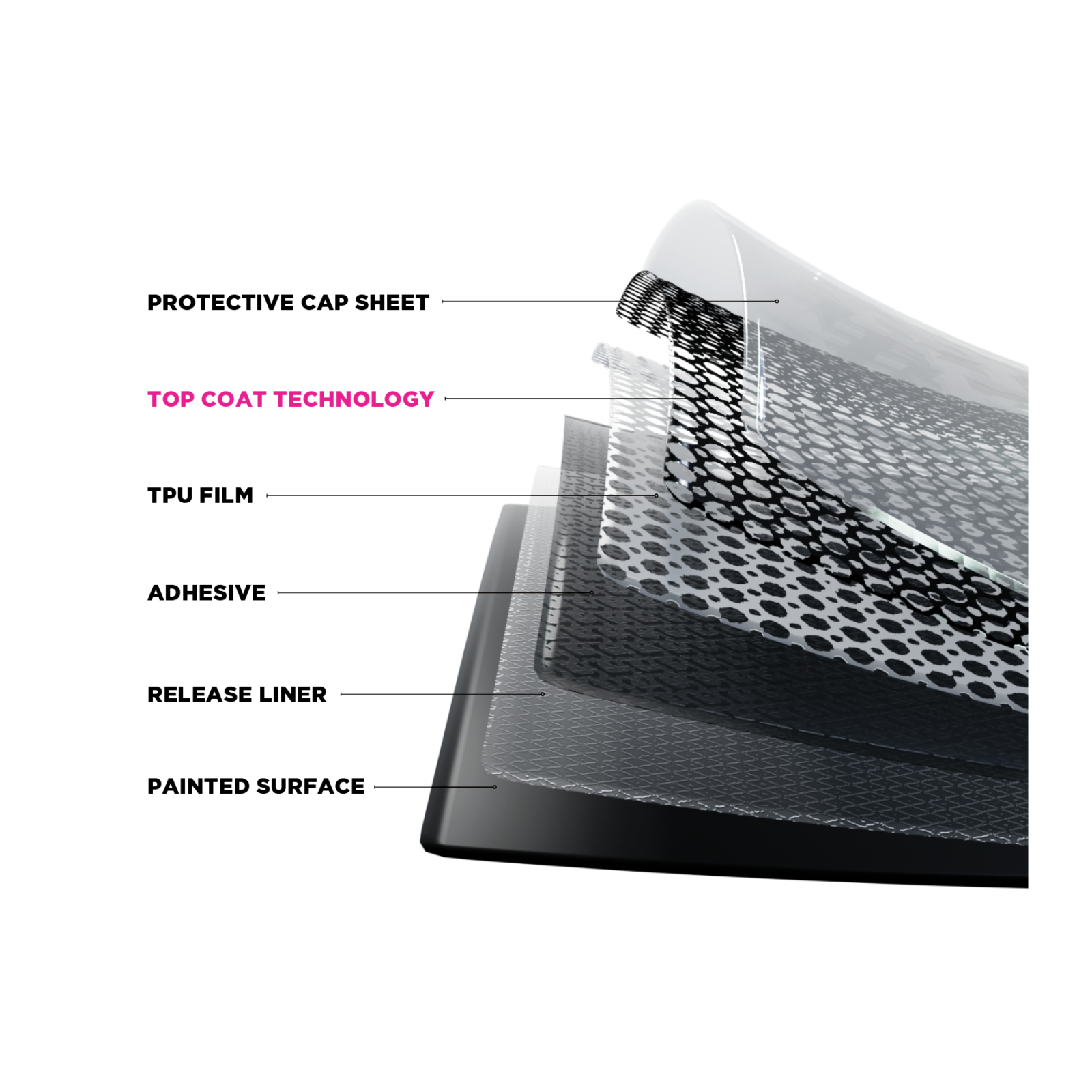Written By: Ben Adzigirey
If you’ve ever worried about rock chips, scratches, or the long-term wear and tear on your car’s paint, then you’ve probably come across Paint Protection Film (PPF). Or, maybe you haven’t and I’ve just brought this problem to your attention. Take a closer look at your paint and you might be surprised by what you find. Yes, there is a way to prevent this wear and tear. As an experienced PPF trainer at Ceramic Pro, I get a lot of questions about what PPF is, how it works, and whether it’s worth the investment. So, let’s break it down in a way that makes sense and helps you make the best decision for your needs and your vehicle.
PPF is a clear, sometimes colored, polyurethane film that is applied to a vehicle’s exterior surfaces to protect that paint from damage. PPF is most commonly used on automotive exteriors but can be used elsewhere. It tends to be anywhere from 6-8 mils thick and is quite flexible. It acts as an invisible shield, preventing rock chips, road debris, bug splatter, and other environmental contaminants from making direct contact with your car’s paint.
Thanks to advancements in technology, modern PPF is self-healing, meaning that minor damages to the film disappear with heat exposure – that can be from a heat gun, sun exposure, warm water, etc.
PPF is made up of three main layers, each playing a crucial role in performance:
Not all PPF is created equal. The quality of each layer–adhesive, TPU, and top coat–varies from brand to brand, impacting durability, clarity, and longevity. All films age differently. Some films may turn yellow over time, while others remain crystal clear for years. This is why it’s essential to know what film is being applied to your vehicle. If you’ve grazed a shopping cart or lightly backed into your garage door and need to replace a single panel of PPF, you want to ensure a seamless match.
One of the key advantages of choosing a Ceramic Pro Elite Dealer is transparency. With us, you know exactly which film is going on your vehicle, and ensure consistency in quality and appearance. Warranties also differ from film to film. There are plenty of great films out there, just be sure to ask about what you’re receiving in the case you need to warranty the film.

PPF pricing depends on several factors, including coverage, size of the car, film quality, and installer expertise. A full-body PPF wrap can range from $5,000 to $8,000+, while partial coverage options–such as a front-end package (hood, genders, bumper, mirrors) – can cost between $1,500 and $3,500.
You don’t have to protect your entire vehicle with PPF. Many car owners may opt for high-impact areas, like the front bumper, hood, and side mirrors, where rock chips and road debris cause the most damage. Others prefer full coverage for peace of mind. Personally, I like to suggest protecting the rear luggage area on your back bumper. Loading and unloading groceries, furniture, luggage, and daily necessities can really scuff up that part of your bumper without you realizing.
PPF and vinyl wraps may seem similar, but they have different purposes:
If you’re looking to protect your paint, PPF is the best choice. If you want a cosmetic change, a vinyl wrap is the way to go.
Paint protection film is the ultimate defense for your car’s paint, shielding it from chips, scratches, and daily wear. Choosing the right film and installer makes all the difference in how well your PPF performed over time. There are a lot of high-quality films and talented installers out there for you to choose from. At Ceramic Pro Elite Dealers you get all of this plus transparency, a solid warranty, and a customer experience that we pride ourselves in.
If you have any questions or want to explore your PPF options, contact us today by filling out the form below!

Ben Adzigirey’s passion for automotive protection began in his early teens, learning detailing and paint correction from a neighbor’s mobile business. In 2018, he trained under an experienced PPF installer, gaining expertise in protecting high-end exotics and hypercars. By 21, he was working on some of the most prestigious vehicles in the industry.
In 2023, Ben joined Ceramic Pro as a corporate PPF trainer in California, where he now shares his knowledge with the next generation of installers. His hands-on experience and dedication help elevate the standards of PPF installation.